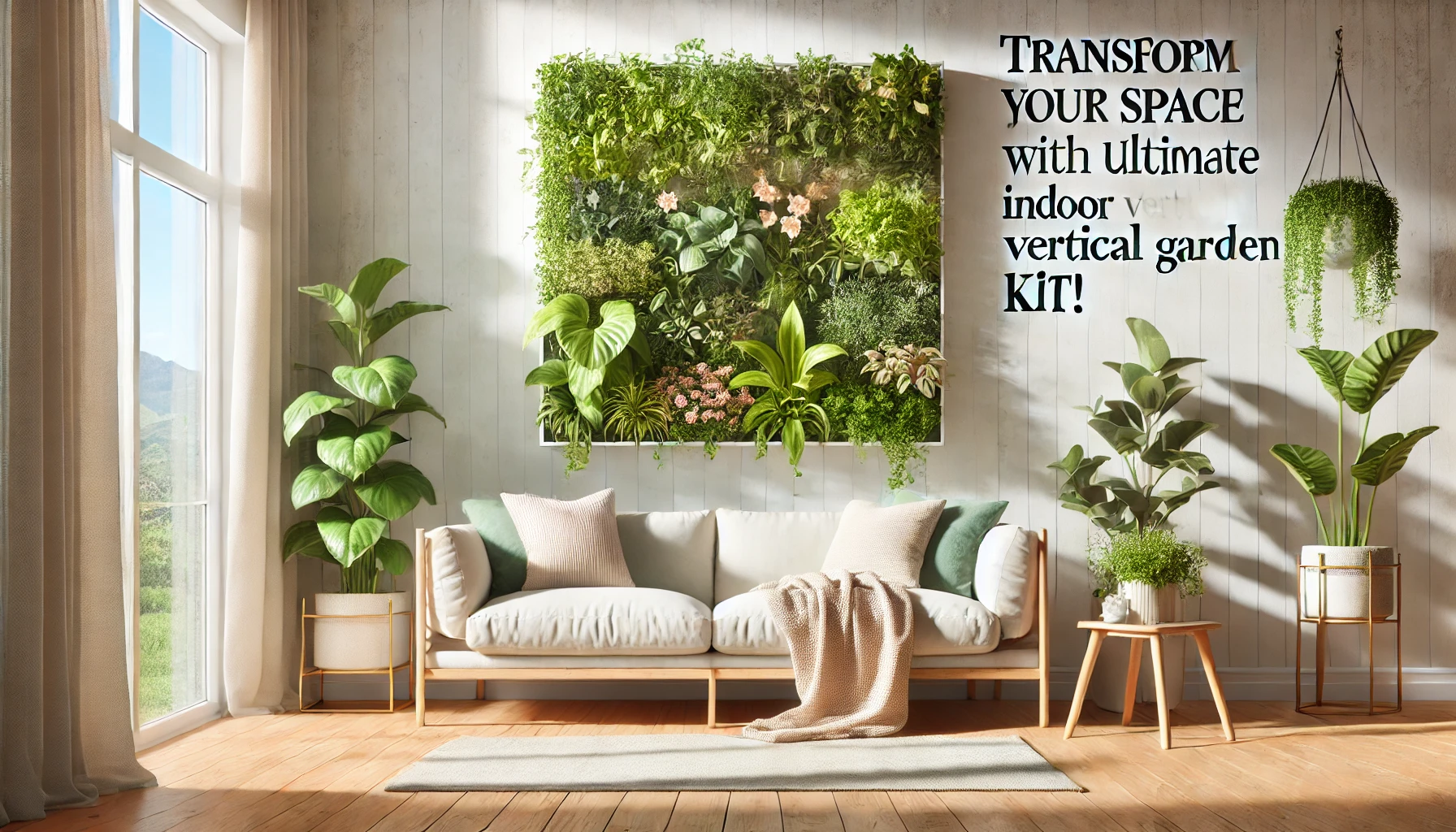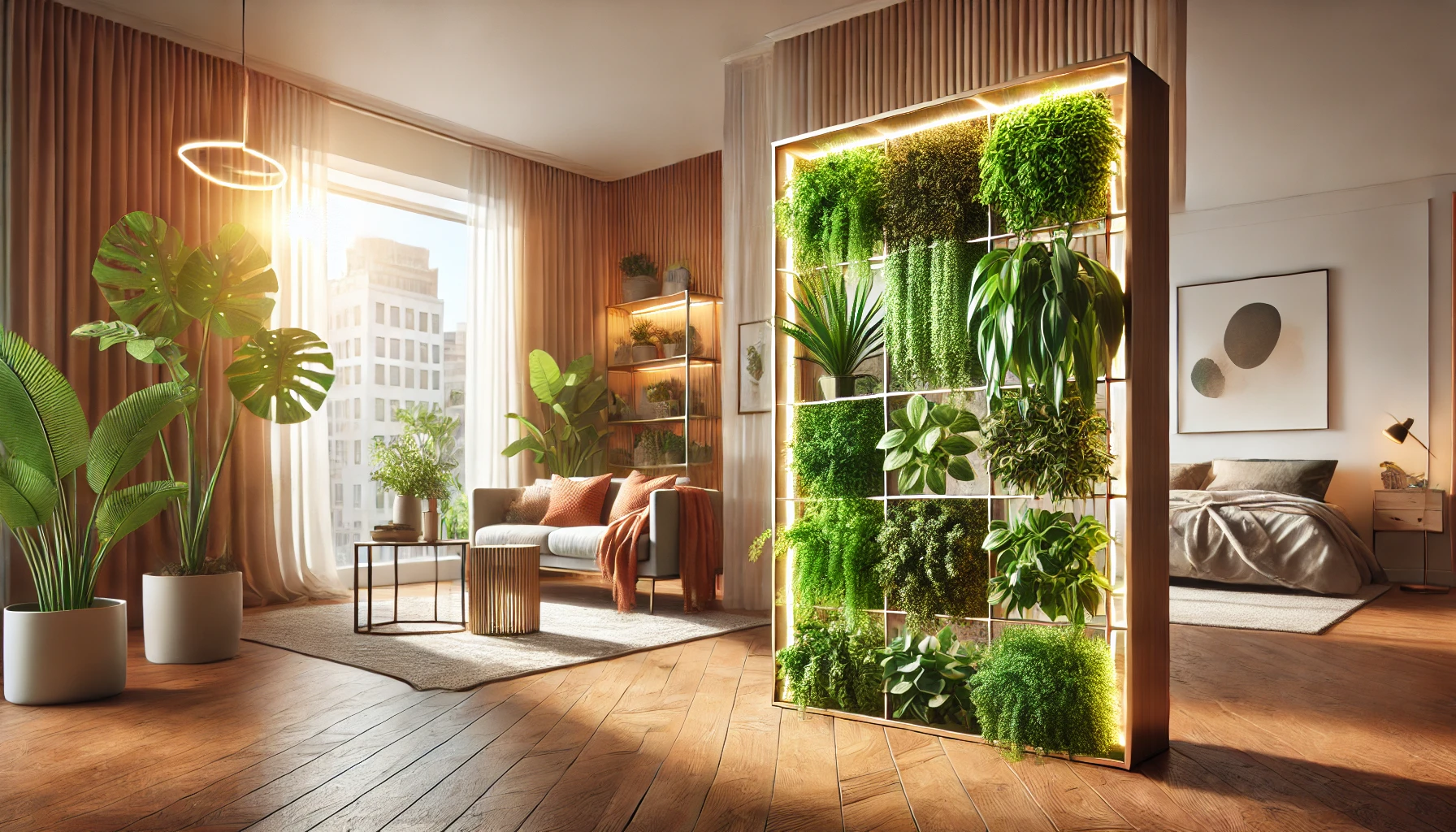Indoor vertical garden kits are revolutionizing the way we think about gardening by bringing nature indoors and upwards, creating lush green walls and vibrant displays in limited spaces.
Whether you’re an experienced gardener or a beginner exploring indoor gardening, these kits offer an innovative solution to growing plants in a modern, space-saving way. Let’s delve into the various aspects of vertical gardening, exploring its benefits, challenges, practical tips, and the best plants to cultivate.
Are There Any Drawbacks to Using Vertical Gardens?
Vertical gardens are undoubtedly attractive and functional, but they come with a few challenges. Understanding these potential drawbacks can help you make an informed decision about incorporating one into your indoor space.
Initial Setup Costs
Quality vertical garden kits can be expensive, especially those equipped with automatic watering systems or built from premium materials. This upfront investment might deter budget-conscious gardeners.
Maintenance Requirements
Vertical gardens often require consistent maintenance. Plants in a vertical arrangement can dry out quickly due to exposure, necessitating frequent watering and monitoring.
Proper fertilization is also crucial since plants in vertical gardens may have limited access to nutrients compared to traditional soil gardens.
Structural Considerations
Depending on the size and type of the garden, it might require a sturdy wall or support structure. Improper installation can lead to damage to walls or the garden itself.
Pest and Disease Management
While vertical gardens are less prone to soil-borne pests, they’re not immune to problems like aphids, mites, or mold. Close monitoring is necessary to keep plants healthy.
Plant Selection Limitations
Not all plants thrive in a vertical garden. Plants with shallow root systems or those that can adapt to limited space are ideal, restricting your options somewhat.
Do Indoor Gardens Really Work?
Indoor gardens, particularly vertical ones, are not only aesthetically pleasing but also functional. However, their success depends on proper planning and execution.
Benefits of Indoor Vertical Gardens
Maximizing Space
Indoor vertical gardens are perfect for small apartments or homes with limited outdoor space. They utilize vertical space effectively, turning unused walls into productive green areas.
Improving Air Quality
Plants are natural air purifiers. They absorb carbon dioxide and release oxygen while filtering pollutants, making indoor air healthier.
Creating a Relaxing Environment
Greenery has been proven to reduce stress and improve mental well-being. An indoor vertical garden can transform your space into a tranquil oasis.
Growing Fresh Produce
Many vertical garden kits allow you to grow herbs, vegetables, and fruits indoors, giving you access to fresh produce year-round.
Factors for Success
Light
Ensure your indoor garden receives adequate light. Use grow lights if natural sunlight is insufficient.
Watering
Overwatering and underwatering are common pitfalls. Invest in a system with built-in irrigation to simplify care.
Humidity and Ventilation
Maintain appropriate humidity levels and ensure proper air circulation to prevent mold and mildew.
Plant Selection
Choose plants suited to indoor conditions, such as pothos, philodendrons, or herbs like basil and mint.
How to Make a Home Vertical Garden
Creating a vertical garden at home is a rewarding DIY project. Follow these steps to build your own green masterpiece:
Materials Needed:
- A vertical garden kit or wall planters
- Potting mix or soilless medium
- Plants suited for vertical gardening
- Irrigation system (optional but recommended)
- Tools: Drill, screws, and wall anchors
Step-by-Step Guide
Choose the Right Location
Select a well-lit area, preferably near a window with ample sunlight. If natural light is limited, invest in grow lights.
Install the Structure
Secure the vertical garden kit or planters to the wall. Follow the manufacturer’s instructions carefully to ensure stability.
Prepare the Soil or Medium
Use high-quality potting mix enriched with nutrients. For a soilless option, consider hydroponic systems.
Plant Selection and Arrangement
Choose a mix of ornamental and functional plants. Arrange them aesthetically, considering their growth habits and sunlight needs.
Set Up Irrigation
Install a drip irrigation system for hassle-free watering, or plan a manual watering routine.
Monitor and Maintain
Regularly check for pests, prune plants, and replenish nutrients to keep the garden thriving.
What Grows Best in a Vertical Garden?
Not all plants are suited for vertical gardening. Choosing the right ones ensures a healthy and visually appealing setup.
Best Plants for Indoor Vertical Gardens
Herbs
Basil, mint, parsley, thyme, and cilantro are excellent choices for vertical gardens. They’re compact, fast-growing, and useful for cooking.
Leafy Greens
Lettuce, spinach, and arugula thrive in vertical arrangements and are perfect for fresh salads.
Fruits and Vegetables
Cherry tomatoes, strawberries, and peppers adapt well to vertical setups and provide a rewarding harvest.
Ornamental Plants
Pothos, ferns, succulents, and philodendrons add beauty and greenery to your indoor space.
Tips for Planting Success
Layering
Place larger plants at the bottom and smaller ones at the top to ensure even light distribution.
Soil and Nutrients
Use a lightweight, well-draining mix and feed plants regularly with appropriate fertilizers.
Watering
Install a drip system or water carefully to prevent over-saturation or dryness.
Advanced Tips for Vertical Gardening Enthusiasts
As you become more comfortable with vertical gardening, you can explore advanced techniques to elevate your indoor garden to the next level. Below are some innovative ideas:
Incorporate Technology
Smart Irrigation Systems
Invest in systems with timers and sensors that automatically water plants based on their needs.
LED Grow Lights
Use energy-efficient LED grow lights to optimize plant growth without increasing your electricity bill.
App-Based Monitoring
Some kits come with apps that monitor plant health and provide real-time care tips.

Design Inspirations
Artistic Layouts
Create patterns with your plant arrangement to make your vertical garden a living piece of art.
Mixed Plant Varieties
Combine flowering plants, trailing vines, and herbs for a visually dynamic garden.
Seasonal Themes
Swap out plants seasonally to keep your garden fresh and aligned with holidays or weather.
Experiment with Growing Techniques
Hydroponics
Transition to a soilless medium for faster growth and less mess.
Aquaponics
Integrate a fish tank into your garden system for a self-sustaining ecosystem.
Composting Stations
Add a small composting bin to recycle organic waste and enrich your garden soil.
Vertical Gardens for Specific Needs
Urban Gardening
- In cities where outdoor space is scarce, vertical gardens transform balconies, rooftops, or even interiors into lush havens.
Therapeutic Gardening
- Gardening has therapeutic benefits, and vertical gardens make it accessible to those with mobility issues or limited space.
Educational Projects
- Schools and community centers can use vertical gardens to teach children about sustainability and biology.
Expanding Vertical Gardening into Specialized Areas
Vertical gardens have evolved to cater to specific needs and can be adapted for unique situations. Here are some specialized applications and insights for enthusiasts looking to broaden their gardening horizons.
Indoor Microgreen Farms
Microgreens are highly nutritious and grow quickly, making them perfect candidates for vertical gardening. By stacking trays of microgreens, you can cultivate a variety of healthy greens in a compact space.
Vertical Herb Walls in Kitchens
Imagine having a vibrant wall of fresh herbs within arm’s reach in your kitchen. A vertical garden in this space not only adds functionality but also enhances the aesthetic appeal of your cooking area.
Incorporating Aromatherapy Plants
Lavender, chamomile, and mint are excellent choices for vertical gardens aimed at relaxation and stress relief. Their soothing scents can transform a room into a calming retreat.
Wildlife-Friendly Vertical Gardens
Incorporate plants that attract pollinators like bees and butterflies. While primarily suited for outdoor gardens, these can be adapted for balconies or areas with access to sunlight.
Hydroponic Vegetable Towers
For serious growers, hydroponic vertical towers allow for efficient cultivation of vegetables like lettuce, kale, and cucumbers. These systems are self-contained and maximize yield in minimal space.
Conclusion
Indoor vertical garden kits provide a unique and effective way to incorporate greenery into your home. While there are challenges, proper planning and care can help you overcome them and enjoy the numerous benefits of vertical gardening.
From growing fresh produce to beautifying your living space, these gardens prove that even small spaces can flourish with life and greenery. So, embrace the trend, and start your vertical gardening journey today!


I appreciate how this post highlights the potential challenges, such as maintenance and structural considerations. These were certainly factors I encountered, especially with keeping my plants evenly hydrated. However, the benefits far outweigh the hurdles, especially the mental relaxation that comes from tending to greenery.
I particularly enjoyed the section on advanced tips like smart irrigation and seasonal themes. It inspires me to take my setup to the next level by incorporating some artistic layouts and perhaps experimenting with hydroponics. Excellent guide for both beginners and seasoned enthusiasts!
Thank you for sharing your thoughtful perspective! I’m glad the post resonated with you and that you’ve found both the challenges and rewards of gardening so enriching. It’s amazing how something as simple as tending to greenery can have such a profound impact on mental well-being.
Your interest in advancing your setup with artistic layouts and hydroponics sounds exciting! Hydroponics, in particular, opens up so many creative possibilities while addressing hydration challenges. I’d love to hear how your experiments go—maybe you could share some tips or photos once you’ve started. Happy gardening, and thank you again for your kind words!